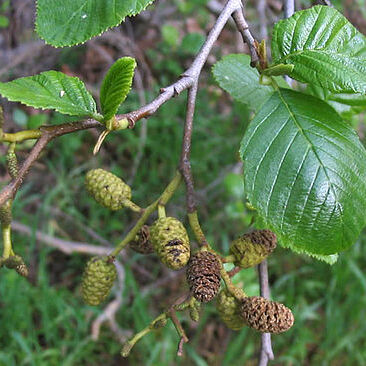Trees , to 35 m; trunks often several, crowns spreading, open. Bark light gray, smooth, becoming darker and breaking into scales in age; lenticels inconspicuous. Winter buds stipitate, ellipsoid to obovoid, 3--9 mm, apex rounded; stalks 3--5 mm; scales 2, equal, valvate, sometimes incompletely covering underlying leaves, moderately to heavily resin-coated. Leaf blade narrowly elliptic to rhombic, rarely ovate, 4--9 × 2--5 cm, base cuneate to rounded, margins flat, finely serrate or serrulate, sometimes slightly lobed, without noticeably larger secondary teeth, apex acute or obtuse to rounded; surfaces abaxially sparsely pubescent to villous. Inflorescences formed season before flowering and exposed during winter; staminate catkins in 1 or more clusters of 3--7, 3--10 cm, stamens 2, or 4 with 2 reduced in size; pistillate catkins in 1 or more clusters of 2--6. Flowering before new growth in spring. Infructescences ovoid to nearly cylindric, 1--2.2 × 0.7--1 cm; peduncles 1--10 mm. Samaras broadly elliptic, wings narrower than body, irregular in shape, leathery.
More
A deciduous tree. It grows 35 m tall and spreads 5 m wide. The stem is slender and erect. The bark is mottled and pale grey. The leaves are oval and taper. They are 10 cm long. The flowers are catkins. The male ones are 15 cm long. The fruit are oval cones 1 cm across.
Usually found in rocky or gravelly soils along the sides of streams, in canyon bottomlands and gulches, from near sea level to 2400 metres.
More
It will grow in most moist, well-drained soils. It is best in an open sunny position. It is resistant to frost but sensitive to drought.


